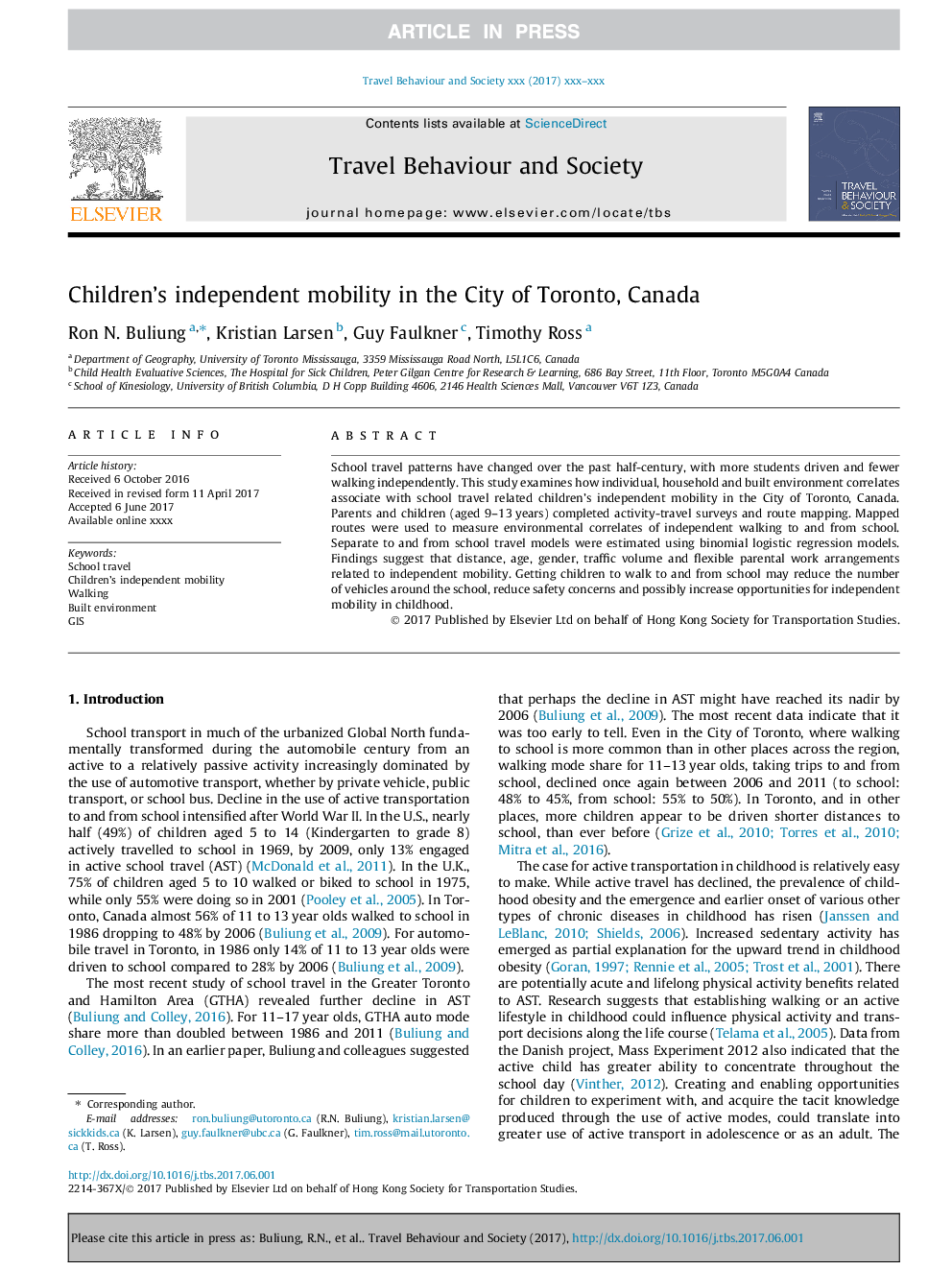| Article ID | Journal | Published Year | Pages | File Type |
|---|---|---|---|---|
| 4762088 | Travel Behaviour and Society | 2017 | 12 Pages |
Abstract
School travel patterns have changed over the past half-century, with more students driven and fewer walking independently. This study examines how individual, household and built environment correlates associate with school travel related children's independent mobility in the City of Toronto, Canada. Parents and children (aged 9-13Â years) completed activity-travel surveys and route mapping. Mapped routes were used to measure environmental correlates of independent walking to and from school. Separate to and from school travel models were estimated using binomial logistic regression models. Findings suggest that distance, age, gender, traffic volume and flexible parental work arrangements related to independent mobility. Getting children to walk to and from school may reduce the number of vehicles around the school, reduce safety concerns and possibly increase opportunities for independent mobility in childhood.
Related Topics
Life Sciences
Environmental Science
Management, Monitoring, Policy and Law
Authors
Ron N. Buliung, Kristian Larsen, Guy Faulkner, Timothy Ross,
